During the past several Virginia QSO Parties, members in our club have experimented with several antenna solutions.
Some have the big bad beam high in the sky with an 80 meter dipole added.
Others have smaller beams and more wire antennas.
Others go mobile on VHF and HF.
Still others go expedition and construct antennas that lend themselves towards portability.
I am considering added a 75 meter turnstile antenna to my station.
My club is very active in the Virginia QSO Party. All members have supplied their logs for analysis with Cabrillo Analyzer resulting in these graphs of QSOs over time categorized by band…
80 meter contacts are shown in dark purple. It is quite obvious the band that brings in the points is King 80.
During our sunspot minimum we figure concentrating on 80 and 40 antennas for VAQP 2009 is essential. 20 and 15 are important too. 10 is almost pointless except for some local contacts.
Last year my 75 meter inverted V worked just fine. The apex was about 50 feet up with the wire tips dropping to within ten feet of the ground. This plus several other antennas worked OK. NVIS was most certainly the rule for 80 and 40 this contest.
For 2009 I am wondering if there is something more I can do with 75 and 80 meters. I read some notes about ionospheric sounding techniques that sometimes uses turnstile antennas to transmit their ping upwards and most always use turnstile dipole sets to receive the reflected ping from the ionized layers.
Is this a technique I can use to improve my 75 meter antenna’s performance?
If I create two inverted v antennas arranged orthogonally in EZNEC, but not quite touching at the top…
…and feed feed each like a normal dipole with 90 degrees phase difference between them…

…we get…
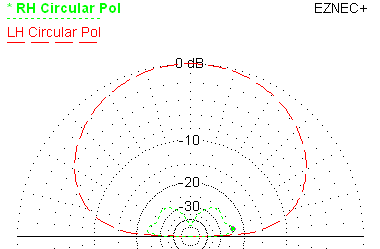
Research on the Internet reveals little information except for the occasional “Wow, so and so was sure loud with his 75 meter turnstile.” This is enough for me to at least try this.
The ionosphere folks suggest providing a way to switch the handedness of the polarization by simply inverting the connections of one of the feeds. If I have enough time I will put together a relay box that can select one, the other, both in RHCP or both in LHCP. It will be an experiment.
Listen for kx4o during the weekend of March 20 on 80 meters and tell me if you think my turnstile antenna is worth the effort.
UPDATE: Nov. 2010
The ARRL QST Article about X and O propagation has certainly brought in some extra hits to this particular page. If anyone is considering making this 75 meter Inv. V Turnstile antenna I suggest giving Chapter 8 of the ARRL Antenna Book, 21st ed. a read… especially the section on mutual coupling. When I finally made my turnstile I simply split one coax to two pieces… each feeding a turnstile element. This worked, but I did not take mutual coupling into account. A well arranged turnstile minimizes mutual coupling, but the Inv. V is less than perfect with regard to keeping mutual coupling low. As explained in the Antenna Book, mutual coupling will cause the impedance of each element to be different from the classic free space version of the antenna. One thing going in my favor is the relative symmetry of this turnstile arrangement; Each feed point should be affected identically if I have the same downward angle on all the wires. The moral of the story is my assumption of making one of the two feed-lines 90 degrees longer than the other totally skips some analysis I probably should have done as explained in the Antenna Book to ensure the current phases are 90 degrees. I need to fire up EZNEC and play with their transmission line models a bit to ensure I really am getting good CP.
UPDATE 2011:
Learning never ceases in Ham Radio and the topic of phasing antennas is no exception. I am enjoying the six article series by Forrest Gehrke (Ham Radio Magazine 1983-1984) about phasing vertical antennas. Mutual coupling makes my above method of phasing two antennas problematic. One thing going for me is the two elements are orthogonal which does limit the amount of mutual coupling. However, they are Inverted V so there will still be some. So… I need to analyze the above system a bit more. That’s for a future post.

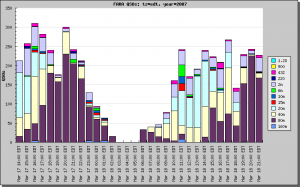
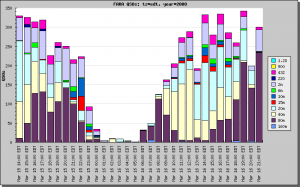
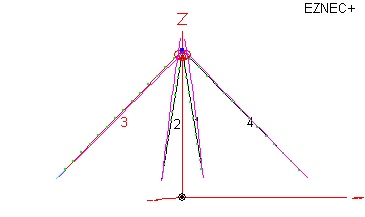
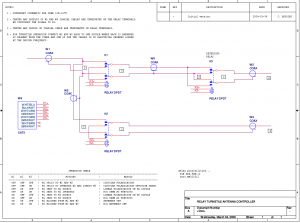
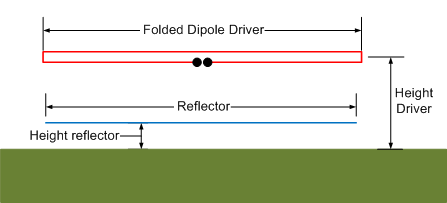
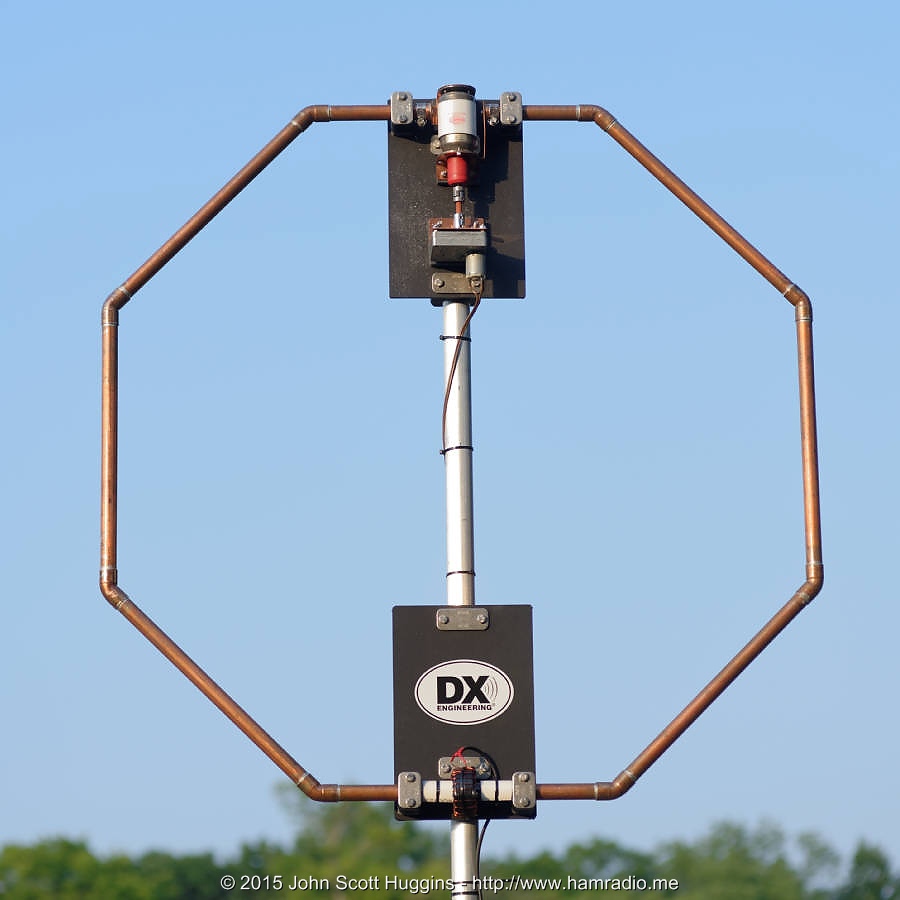
Last year's results with this turnstile antenna on 75/80 meters were positive during the March Virginia QSO Party. NVIS contacts were made with ease and the band was almost too loud.
This antenna will be going up again for this QSO Party again this year.
Is there any dimentions on the buield antenna ??